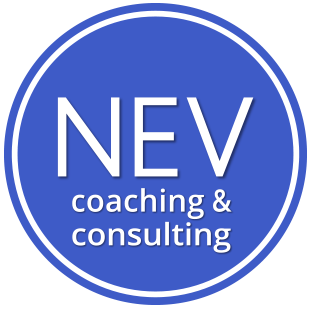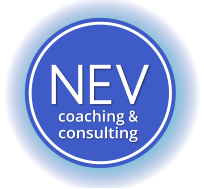 Authentic Marketing – Marketing is such a big topic of interest in today’s age and yet remains an elusive concept when it comes down to the everyday ways we can promote our businesses and secure the right clients.
Authentic Marketing – Marketing is such a big topic of interest in today’s age and yet remains an elusive concept when it comes down to the everyday ways we can promote our businesses and secure the right clients.
In this post, I want to break down the very idea of “marketing” and explore with you ways to find approaches that will work for you and for your particular initiative.
But first, I should say that my concept of marketing has always been quite “different”.
Though I have respected and learned a great deal from mainstream marketing approaches, many did not cater to my particular style of getting out there, creating a name and a brand, and securing the trust of my potential clients.
Specifically, it was that many such strategies seemed forced, aggressive, and contrived in a way that I would never have like to be approached as a client myself.
Thankfully, the concept of “authentic marketing” has since emerged, and with it a new era of how to “put our best face forward” and find success in the ventures we aspire to create. For ourselves, and the world at large.
Whether your initiative is a business, a program, or simply yourself as a professional, the following points can help you to:
- Define the best you have to offer
- See the most effective means of getting it to the people who will care the most
- And get you the results you are seeking.
1) What is “authentic marketing”?
 I define it as “putting your authentic, best face forward and employing meaningful, effective strategies towards achieving your goals with your target audience”.
I define it as “putting your authentic, best face forward and employing meaningful, effective strategies towards achieving your goals with your target audience”.
However, I was not the first to coin this concept of “authentic marketing”, which The Authentic Marketer defines as “sharing who you are and what you offer with grace and ease”.
The idea is that instead of creating tricks and gimmicks to capture clients, we can clarify and develop our best offering to the people and organizations that are genuinely needing and looking for what we have to give.
Many of us struggle with the idea of “selling ourselves”, which can often feel forced, arrogant, intrusive, or simply not in line with our true nature and style of interacting with others.
But the key is not to “sell” nor to sell “yourself” but rather get in touch with the deeper values, passions, and talents that we are willing to work so hard to contribute to this world.
Once we can identify that higher goal, beyond just our own individual benefit, it becomes easier to fully put ourselves out into the world, engage with others confidently – even passionately! – and fearlessly promote what we have to offer.
Authentic Marketing, then, simply becomes the path and process towards bringing our message to the world and convincing them to come along.
So let’s begin.
2) Authentic Marketing: Define the STORY
I have spoken of this concept many times as I always believe in first clarifying the “core”, which in this case means YOU, your values, talents, passions, and intentions with what you want to offer.
However, our Story does not evolve in a vacuum and thus once we have some solid starting point, it is real life experience that allows our Story to flourish and take root in others.
I define The Story as a clear, concise, thoughtful narrative of the Why, How, and What that you are looking to fulfill and for whom.
Simon Sinek first presented this intelligent model and you can see his excellent TEDx presentation here. It is not a gimmick to sell to your audience and so it is not “designed”. It is simply a polishing of the most important information you want to convey with a language that effectively communicates that.
Imagine being at a networking event or a casual dinner and being asked “what do you do?” or “what is your work about?” or “tell me more about your plans?” and you automatically have a genuine Story to tell.
But the key word here is: genuine.
How do we begin defining our Story? We ask the right questions.
You can do this in a form of self-coaching, conversation with your peers, or in a professional coaching session. But then the most critical point is going out there and testing it out, letting it interact with the world.
Here is how to get started:
- WHAT are you offering (what is your product, service, expertise, etc.)?
- HOW do you create that offering (your process, methods, plans, models, objectives, etc)?
- WHY do you do what you do (your beliefs, values, passions that drive you)?
- What are your TALENTS (see here for more on this)?
- What are your COMPETITIVE ADVANTAGES (what makes you stand out from the rest)?
- What is your history and experience that contributes to your greatness?
Once we have some clarity as to where we stand and why we can begin to understand who might care to listen and work with us.
3) Your Audience
Sometimes, we may be clear on what we have to offer but not necessarily on who might care about that or what exactly they are looking for and why.
For this reason, it is critical to take the time to identify and understand one’s target audience.
 In the case of a business, this would be your clients but could also be your collaborators or what we nowadays call your tribe: anyone willing and capable to help you.
In the case of a business, this would be your clients but could also be your collaborators or what we nowadays call your tribe: anyone willing and capable to help you.- If it is a program or organization, you would be more focused on your “tribe” but also those willing to sponsor your work should that be required.
- If you are a professional looking for a position or new opportunities in whatever fashion, it would be those willing to give you leads, promote and expand your search, and generally speak on your behalf in a way that can get you closer to what you are looking for.
Either way, we are looking for ways to results and meaningful connections that will help guide, coach, support, fund, and open doors for you.
So who are they?
I often find that with this exercise, it is helpful to not just think about our audience but even go so far as to close our eyes and “get into their skin” – a kind of empathy study as I call it, to really get in touch with where they are coming from.
- Who is your target audience (clients, collaborators, sponsors, employers, supporters, etc.)?
- What do you know about them (demographics, preferences, experiences, etc.)?
- What are they looking for (in general, in your area of expertise, in related areas)?
- How do they prefer to receive this information/assistance (in person, telephone, internet, etc)?
- Where do they gather (virtually and in person)?
- What are their aspirations?
- What are their concerns?
The more thoughtful detail you can generate in answering these questions, the more impact you can create in your marketing messages and strategies in reaching your audience(s).
4) Your Competition
The most frequently discarded study in marketing, particularly in small business, is analyzing one’s competition.
Perhaps it is because it can feel daunting, or even threatening, to see who we are “up against”. But I find this stance rather damaging in our pursuit of success as our competition can provide us with very useful guidance.
First, on what works and what doesn’t, not to mention that many collaborative peers exist that can provide invaluable industry-specific support in ways that no one else can.
In the end, I agree with others who reject the scarcity fears that there is not enough out there for all of us…money, recognition, innovation, etc.
There is always room out there to improve upon the existing, innovate in an entirely new direction, present passionate arguments, or simply find a specific audience or offering that has yet to be catered to.
Once again, look to Simon Sinek for more on this, as well as Richard St. John’s short and charming presentation on the 8 Secrets of Success.
Failure is usually a matter of giving up when giving up is not the actual best next option. And if it is, then it’s not necessarily a failure but an evolution of original plans.
So how can we consider our competition?
- Who is your competition?
- What are they offering?
- Who do they cater to?
- What are they doing right?
- What are they doing wrong or not doing at all?
- Where do they gather and who do they connect with?
- Where do they get their support and resources?
5) Your Authentic Marketing Strategy
 When you have given some focused thought to the above, you can start to formulate more effective strategies on what audiences to focus on (for whatever means).
When you have given some focused thought to the above, you can start to formulate more effective strategies on what audiences to focus on (for whatever means).
- how best to reach them,
- and how to formulate marketing messages and campaigns that truly get to the heart of what they are looking for and WHY.
The “why” is key, because as Simon Sinek says, “we do business not with those who need what we have, but those who believe in what we believe”.
At the end of the day, think of yourself as a client – as we all are at some point or another.
- What attracts you to a person, a business, or an initiative?
- How do they speak to you that makes you believe in them?
- And what convinces you to go from thinking about it, to saying “YES!”, I’m on board?
If you are looking to work with someone to help you develop the above, please see our new Authentic Marketing ToolKit offerings or contact me.
Happy Marketing!


